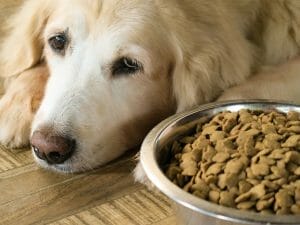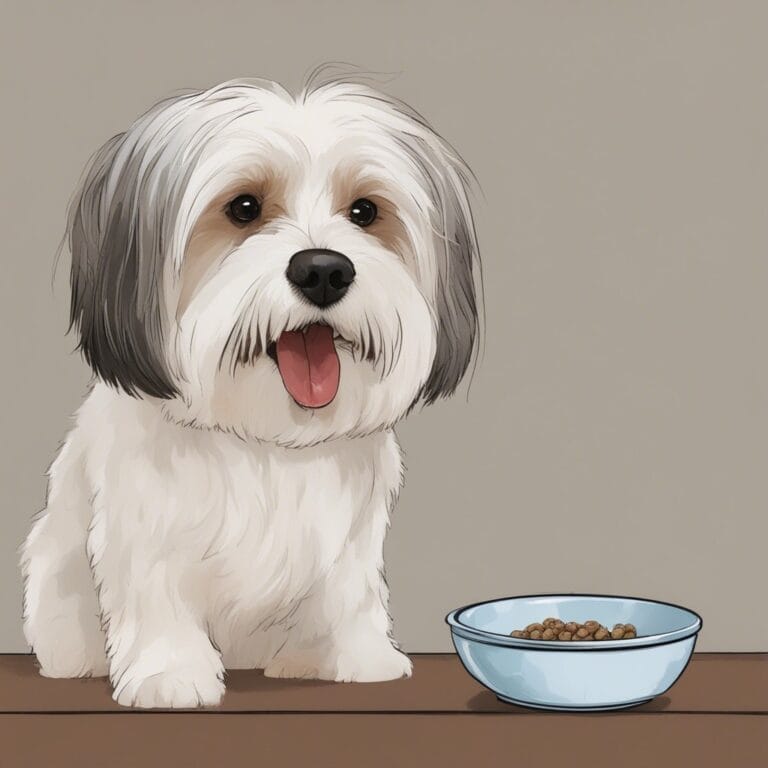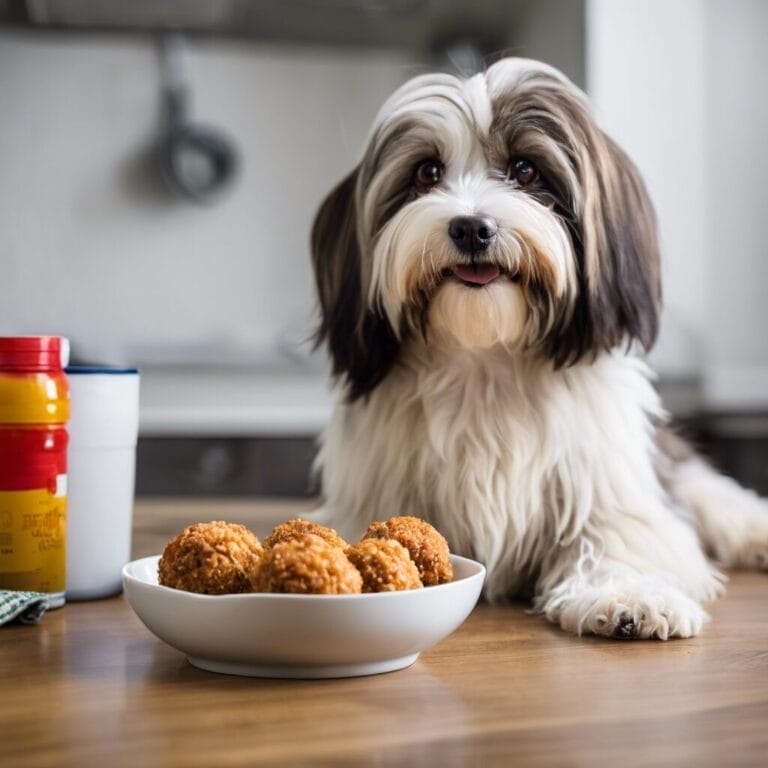
As an affiliate, I may collect a share of sales or other compensation from the links on this page
How to get your dog to eat? That is the question I have faced as the owner of three Havanese dogs. It has been a constant struggle to get them to eat their food. They can be very fussy eaters and often get bored with their dry food. Of course, they never get bored with dog treats.
When a dog isn’t eating, it can be very worrying. You know they need to eat to stay healthy, but they will not eat anything you try to give them. So, I decided to research the topic of how to get your dog to eat and I came up with the following.
First, it is important to know what to do when a dog refuses to eat. The first thing to do is to keep in mind that your doggy is not going to die if he goes a few days without food. The most likely reason your dog won’t eat is because of a medical or emotional condition.
Dogs are usually treated like a member of the family, so it’s important to take care of them as you would any other member of one’s family. However, dogs don’t always eat equally well with their family members. Several reasons can cause dogs to lose their appetite, for example, poor nutrition, emotional problems, geriatric changes, and behavioral issues. Dehydration can also result in a loss of interest in food. You should be familiar with the following symptoms of dehydration: Loss of appetite, lethargy, dry and sticky gums, dry nose, dried eyes. Seek veterinary attention immediately if a pet is showing signs of dehydration.
It’s often the case that the reason a dog doesn’t eat is because their teeth are broken, loose or bad, or that their gums are inflamed. When checking your pet’s body, look for parasites, changes in their fur and skin, and any lumps or injuries. If you find something suspicious, don’t hesitate to seek out veterinary care. Dogs with dental problems or internal obstructions can also lose their appetite.
So why won’t my dog eat? More often than not, the problem is not a medical one. A dog may simply not like a certain food type sensitivity to specific ingredients – such as wheat, grains, gluten, or certain fruits dietary issues – such as diabetes, food allergies, or thyroid conditions dislike for the flavor of the food, or dislike for the texture stressful or anxious behavior – a dog may refuse to eat if they are stressed or nervous or they may refuse to eat if they are anxious because one or more of their owners is out on a trip or an errand.
Some dogs may not be eating in an effort to manipulate you to put some more treats in their food. If you give a dog a treat even though they’re not eating their food, they’ll learn that if they wait, they’ll get something better – you’ve accidentally trained them to be picky eaters.
Update 2022: We recently switched to Stella Essentials Wholesome Grains Beef Recipe as the main dry food to give to two of our Havanese Dogs and they are eating it consistently without getting bored.

What to Do if a Dog is Not Eating?
Don’t panic. It’s not unusual for Fido to skip a meal or two, especially if it’s hot outside. A dog not eating is one of the most common reasons for a trip to the veterinarian. Here are some tips to help you get a precious canine eating healthy again. Although most canines can go three to five days without food, it is recommended that you call a veterinarian to find out what is going on if your dog has gone two days without food. The first step your vet will perform is to rule out that your dog is not eating due to underlying medical conditions. This is especially true if your dog has experienced vomiting or diarrhea. If your dog seems to be in good health, try adding some different types of food to see if he prefers some over others. If your dog’s appetite is decreasing, try giving him some vitamin supplements or meat-based treats to see if he has a sudden increase in appetite. The type of food a dog eats can often vary and lead to digestive problems. This will give your dog’s system a little time to get used to the change. Next, offer a variety of foods.
Another tip is to try making his food more appealing by adding a spoonful of canned pumpkin, a teaspoon of peanut butter, part of a scrambled egg or a tablespoon of applesauce or baby food. Change the placement of the food. Try giving them dry food in one bowl and canned in another.
Even better add to their food the 15 human foods that according to Newsweek magazine canines go crazy yet are safe for canine consumption. They are, in no particular order:
Carrot
Eggs
Salmon
Mango
Cheese
Banana (tried it, but our dogs have no interest in bananas, but did initially)
Apple (tried it, but our dogs have no interest in them)
Blueberries
Peanut butter
Cantaloupe
Cucumber
Raspberries
Green beans
Chicken
Not listed is baked potatoes or sweet potatoes which our dogs love. Sometimes sprinkling a little parmesan cheese over their food works wonders in terms of enticing their appetite.

When Should You Take a Dog Who is Not Eating to the Veterinarian?
Not all dog owners are dog experts, but you don’t need to be an expert to notice whether one’s dog is acting sick. Changes in a dog’s mood or behavior may indicate that it’s time to get the dog checked out by a veterinarian. At first glance, it might be difficult to tell if a dog is feeling ill. The good news is that there are many ways to tell if a dog is sick. Behavioral changes are one of the most common ways to tell if a dog is sick. A dog who is not eating will be listless, lethargic and possibly even vomiting. Also, when you watch your dog, observe if the dog doesn’t eat anything or just certain kinds of food. If your dog will not eat anything for more than a day, take him to the vet.
A medical appetite stimulant may be prescribed by a veterinarian if a dog refuses food for a long period of time. Dogs are given appetite stimulants if they refuse to eat long enough to impact their health, consistently eat a low number of calories, are receiving medical therapy for a condition that affects their appetite, recovering from illness and need appetite support, or trying an entirely new diet. There are many types, some that cause nausea and others that mimic the hormone that makes a dog hungry. Also, if you dog’s stomach is upset many vets recommend giving him boiled chicken and white rice.
PetMD recommends the several appetite stimulants for sick dogs. Here are the best ones:
Rotisserie Chicken. For a sick, debilitated, or geriatric dog who is picky about eating, one of the easiest (and cheapest) options to try is tempting him to eat rotisserie chicken.
Mirtazapine is a medication for dogs. It’s used to treat anxiety in dogs, and in some cases to prevent anxiety. It’s also used to treat obsessive compulsive disorder in dogs.
Meclizine can help with appetite in some dogs. Meclizine is an antihistamine that is known to reduce nausea due to vertigo. If your dog is not eating due to nausea it may be helpful. But research the side effects of this medication first.
Ghrelin Receptor. There is a new medication on the market for dogs that mimics the effect of ghrelin, which is the hormone that makes a dog or a person feel hungry. The medication binds to ghrelin receptors and signals the brain to cause the dog to feel hungry.
CBD Products. The benefits include reduction of pain and increase in appetite. Please bear in mind that CBD from hemp is not THC, and marijuana is toxic to pets.
Some cool tricks to get a dog to eat.

Trick #1
The following method, even if it looks mean, has worked wonders for lots of fussy eaters.
You begin by giving him the dog food as you usually would for dinner.
At this time, do not interact with the dog. Leave the room. If the dog follows you, ignore him.
Remove the dog’s food dish after 20 minutes if it has not eaten his meal.
Wait until the next morning and offer him a fresh version of the same meal he refused to eat for dinner.
If the dog still doesn’t eat his meal within 20 minutes, take it away the food dish.
When dinner time comes around, the dog will have been hungry all day. When the dog gets to this point, he realizes he won’t get anything else.
At this point your pooch will have only one choice: To eat his food!
The method works, since no healthy dog would starve itself. When it is all or nothing, your pup will be happy to gorge.
Trick #2
It’s important to experiment with different food combinations in an attempt to find the best. If you’re feeding the dog the same food for too long, you may find that they’re not eating it as much.
Changing up the dog’s food can make a difference to your fussy dog’s eating habits.
Recent research suggests fussy dogs prefer fishy taste profiles like salmon, tuna, and whitehead salmon more than traditional flavors such as beef or chicken.
So go to the pet store and ask the salesperson to recommend a different flavor food. But to avoid upsetting the dog’s stomach you want to get a food that in terms of richness is similar to the present food you are giving him. High quality expensive dog foods tend to be very rich while inexpensive foods are less rich. If you are giving the dog medium quality dog food and you suddenly switch to high quality food, he may get an upset stomach. Also, sometimes cheaper food can actually be tastier.
Try to avoid similar flavors when switching. For example, if you dog is sick of eating chicken flavor try a new flavor such as beef, salmon, venison or duck.
Whenever you are transitioning the dog to a new food, it is best to do it slowly to make sure that the dog gets used to the new food.
Now, you need to combine the two foods. The goal here is to decrease the amount of old food and increase the amount of new food over ten days.
Days 1 – 3 – 75% current food. 25% New food
Days 4 – 6 – 50% current food. 50% New food
Days 7 – 9 – 25% current food. 75% New food
Day 10 – 100% New food
Trick #3
It is well-known that you can add a meal topper to a dog’s kibble to make it more appealing. Anything that is added to a dog’s meal to improve its flavor is a meal topper. The most important part of dog food toppers is that they’re simple and easy to make. It’s also important that there’s nothing too complicated or fancy going on, because you want to make sure that you’re using the products that are easy for you and the dog to understand.
A wide variety of edible food toppers are available to choose from, such as:
- Blue Buffalo Wilderness Wild Cuts Trail Toppers. Best Overall Topper.
- Stella & Chewy’s Freeze-Dried Raw Meal Mixer. Best Freeze-Dried Raw Topper.
- The Honest Kitchen Proper Toppers. Best Human-Grade Topper.
- Brutus Bone Broth. Best Liquid/Pour-Over Topper
- Also try adding warm unseasoned string beans or broccoli as a topper.
Trick #4
Exercise your pooch before a meal. It’s no secret that exercising is a great way to build up an appetite.
There are several ways to exercise the dog. One easy and effective method (other than regular exercise) is to take the dog for a walk every once in a while, – walking is great exercise for you too!
Walk the dog farther if you walk it already.
Trick #5
If you are giving your dog wet food, try warming up the food briefly in a microwave. Dogs prefer warm food. But do not heat up dry food. Also, if you are including any human food in the dog’s meal such as chicken or rice, try heating up the food.
If you are giving your dog dry food adding warm water may stimulate his appetite for the dry food. Studies have shown that pouring a little warm water over the dog’s kibble can make him more likely to eat it.
- About the Author
- Latest Posts

Sara is a passionate writer and an avid lover of Havanese dogs. With several years of experience in dog training, breeding, and care, she has developed a deep understanding and admiration for the Havanese breed. Sara’s mission is to provide valuable insights, resources, and tips to help Havanese dog owners provide the best possible care and nurturing for their beloved pets.








